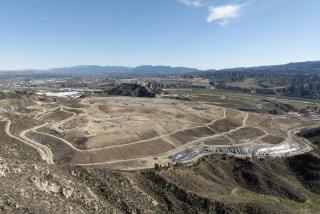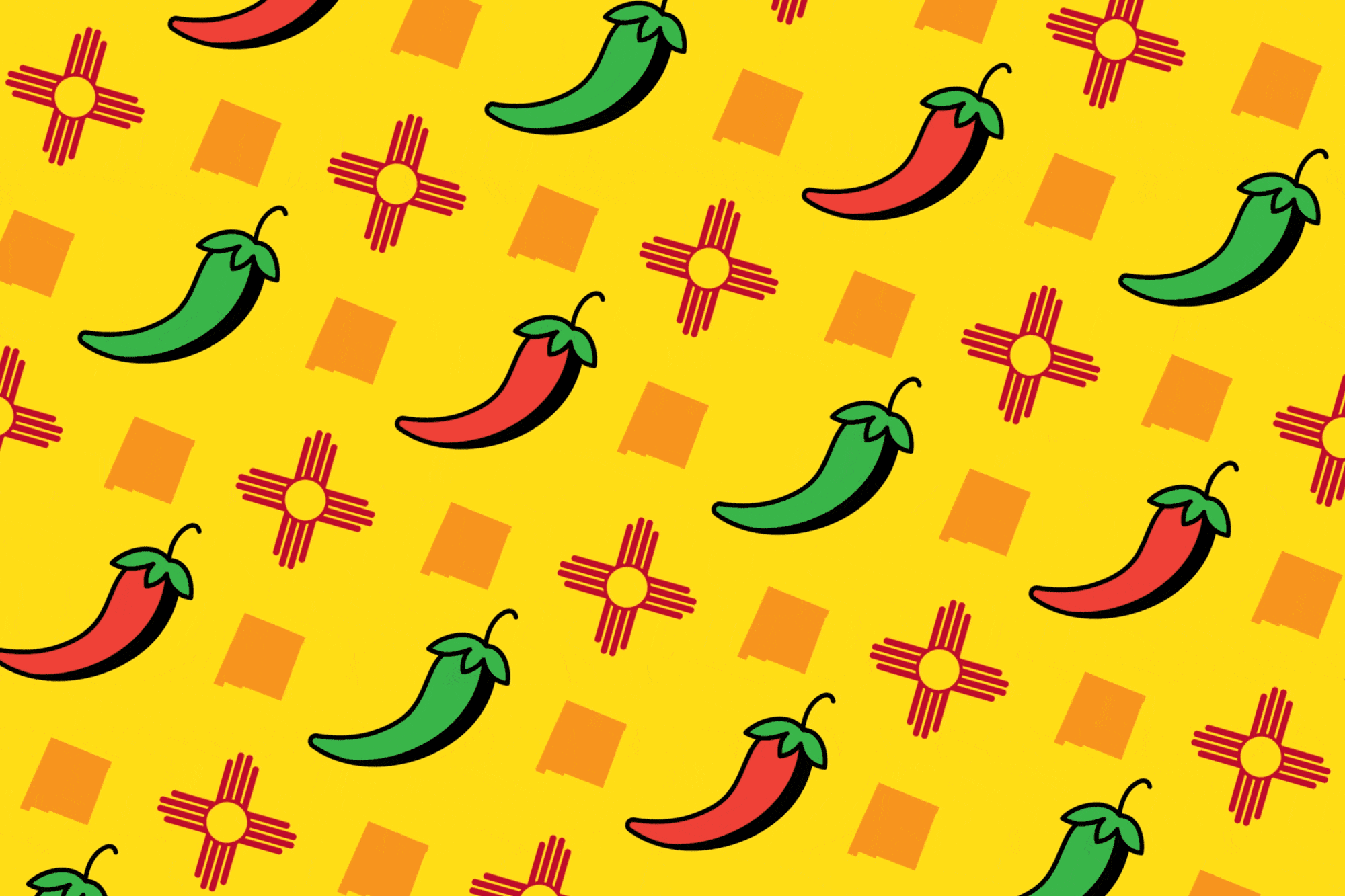Sea of Filth a Way of Life : Society of Scavengers Sifts Through Scraps at Upscale Tijuana Dump
- Share via
TIJUANA — As the diversified columns of trucks arrive, overflowing with the detritus of modern civilization, the pepenadores, or garbage scavengers, swarm around them with a professional fervor, awaiting the spoils. The daily spectacle at the city dump here abruptly challenges illusions about this city’s oft-mentioned prosperity: This is the Third World, all right, less than 10 miles from Southern California.
Some pickers, including families and children, scavenge the trash for metal and bottles for resale. Others eye cardboard, paper products or wood. Everyone hopes for a lucky find: a gold ring, a silver bracelet, or, more improbably, a wad of $100 bills. (Stories, seemingly apocryphal, still circulate about the boy who found $1,000 in a forgotten box.) But many seek a more basic commodity: food.
“Of course, we’ll eat the good stuff,” explained Manuela Esquivel, 61, knee-deep in a rotting, technicolor swamp of fruit and vegetables, seemingly oblivious to the pungent and ubiquitous odor. “This is my chicken caldo (soup) for tonight,” Esquivel added, accompanied by the raucous laughs of nearby women, as she hoisted a plastic bag full of bloodied parts. “What we don’t eat, we give to the pigs. Better to eat this than die hungry.”
Economy Unto Itself
So it goes each day at Tijuana’s largest municipal dump, a harsh, post-apocalyptic vision just a few miles to the southwest of the glitzy tourist drags of downtown, a place where a cloying, acrid smoke from the always-burning fires permeates skin, clothing, eyes and nasal passages.
More than 200 families, among Tijuana’s poorest, depend on the dump--widely referred to here as el dompe, a crude border adaptation of the English--for their livelihoods. Pickers sell the material to middlemen, who resell it for recycling. It is an economy unto itself.
The fly-infested Tijuana dump sprawls over 22 acres of privately owned, largely unoccupied land set on mesa tops and canyons not far from the Pacific. Gulls scavenge alongside the people. Errant plastic bags and other scattered litter from the dump cling to surrounding ashen hillsides and flutter in the wind like the refuse of a long-forgotten settlement. On a bluff above the site, city officials have opened a cemetery where users pay about $8 to bury their dead. Some graves are dug in landfill.
Shocking as the squalid dump tableau may seem to the American eye, it is a commonplace scene throughout the Third World: From Cairo to Lima, impoverished peoples make their living by scavenging from dumps, often jealously guarding their bounties and residing in makeshift hovels alongside and within the heaps of trash--which, of course, are propitious sites for the spread of dysentery and a range of other ailments. Generations have worked some dumps; many adult pickers in Mexico and elsewhere began their occupations as children.
Upscale Dump on Border
But the Tijuana rubbish heap’s proximity to the border, in a city acknowledged as one of Mexico’s most affluent, imparts a jarring note to the spectacle. Indeed, scavengers here say Tijuana’s very prosperity and its location on the border add to the dump’s lure: Residents are more inclined to discard usable and resalable items, many of them made in the United States.
“There are many more possibilities here,” said Francisco Hernandez, 18, a recent arrival from Mexico City, where he said he worked scavenging several large dumps. “There are more valuable things to be found here. People are more civilized.”
Despite their impoverished and desperate appearance, the grimy trash-pickers of Tijuana and other Mexican cities are no worse off generally than most of their countrymen--and, in fact, fare better than many. Although far from middle class, most do eke out a living on the economic margins, where most Mexicans can be found in these days of interminable
economic “crisis”; the pickers’ limited incomes are supplemented by usable salvaged items, from building materials to clothing to food.
“I would say that the economic position of the pickers is somewhat better than the typical workers’,” said Victor Clark Alfaro, a Tijuana anthropologist who has had some contacts with the dump community.
In fact, some Mexican scavengers have tasted the fruits of relative prosperity.
In Mexico City, so-called “King of Trash” Rafael Gutierrez Moreno, who controlled a 10,000-person union of pickers at sundry dumps, left an estate estimated at $1.6 million when he was shot to death last year, apparently the victim of a crime of passion. In Ciudad Juarez, on the U.S.-Mexico border across from El Paso, Tex., dump workers and residents revolted a decade ago against the businessmen who long had exclusive rights to scavenged material. The Juarez pickers eventually gained control of the dump, purchased a fleet of trucks, and established a system enabling trash-pickers to buy houses, insurance and other once-unimaginable amenities.
Not so in Tijuana, however, where ill-organized pickers have little choice but to sell their products to buyers who enjoy monopolies. There is a flip side to the postulation that the scavengers are slightly better off than other workers: “The pickers are also subject to exploitation by those who control the dump, and to any illnesses they may contract there,” noted Clark.
Life in the Dump
The general stigma of toiling amid the trash seems relatively unimportant to many pickers. Accustomed to a life style with few options, many speak approvingly of life in the dump, noting proudly how they set their own hours and answer to no boss, sounding at times like small-business conventioneers.
“You get used to it here; at least no one orders you around,” said Domingo Vicenzio Gallardo, a 39-year-old father of five from the southern state of Veracruz whose family has since resettled in Mexico City as he toils in the north.
Gallardo, shirtless in the midday heat, was found sorting bottles inside one of the many open-air cubicles, fashioned from plastic foam, that the pickers have built to provide storage and rest space. “If I want to come in late or stay home one day, no one bothers me,” he said. “I set my own hours.”
But some pickers interviewed here complained about the indelible stink and grime they must take home with them, almost always to crowded houses without running water or electricity.
“This work bothers me a lot,” said Jose Angel Galeana, a 37-year-old father of four from Acapulco, in the western state of Guerrero, one of Mexico’s poorest. Galeana walks an hour to get to the dump each day by about 7 a.m. “You’re dirty all the time. You work in trash. You stink after work. But what else can I do?”
Migrants to Tijuana
Like Galeana, most dump pickers are migrants to Tijuana, which has long been a magnet for Mexicans attracted to its relatively high standard of living--and to the prospect of crossing into the United States. Galeana says he arrived with his family in Tijuana in January, and, after six weeks of working in fields in Orange County as an undocumented laborer, he became discouraged by his inability to qualify for legal U.S. residence and decided to return to his loved ones here.
“I felt bad leaving my family alone,” explained Galeana, a soft-spoken, tall, erect man, who says he can earn more than $6 a day scavenging at the dump, slightly above the minimum wage here. Others say they can earn up to $10.
Many pickers make ingenious use of materials culled from the dump in construction of their homes. Old tires are widely used for retaining walls and plant pots. Discarded mattress springs serve as excellent fences. Scrap wood is used for building and cooking fires. Little goes to waste.
The existing dump has been in use about five years, since the shutdown of the previous site, which had become filled and was surrounded by the dwellings of the pickers. (None are allowed to reside at the current site; all commute.) Many scavengers from the old dump still journey several miles to the present one. Pickers still mine refuse from the former dump, though it is largely covered by landfill and by residences.
Rules of the Dump
The system in place at the current site is rudimentary: As automated garbage trucks, both city-owned and private, arrive at the dump, the pickers gather around and await the disgorging of the loads. Pickers jump into the beds of rubbish-filled pickup trucks and expedite the unloading, usually by hand. All day long, the scavengers roam the dump’s far-flung piles of trash, burlap sacks and plastic bags filled with recyclable droppings slung over their shoulders. The dump abounds with broken glass, rusty nails and other hazards, and most pickers wear tattered gloves and sandals or shoes fished from the garbage.
The fenced-in dump, which also features an open-air restaurant, has several sections. Animal offal, toxic material and other potentially dangerous materials are supposed to be placed in special areas; liquids and chemical wastes are prohibited completely. But observation confirms that the dumping is often haphazard and unregulated. Illicit dumpers, some from the United States, have also left toxic refuse here illegally, sometimes in the evening, an official acknowledged.
“Sometimes they (the dumpers) fool us,” said Luis Martinez Limon, a partner in a private company, Eco-Contratistas, that has the city concession to operate the dump. “This is a sanitary landfill,” Martinez noted, shifting from Spanish to broken English, “but it’s not completely sanitary.”
But the company policy prohibiting pickers from living on the dump site is strictly enforced, as witnessed by a shotgun-toting guard who watches for after-hours trespassers. Why? Under Mexican law, such residents might eventually be able to make legal claim to the land, threatening business.
‘Would Gain Certain Rights’
“The pickers would gain certain rights if they lived here,” explained Martinez, noting how dwellers in other dumps have managed to gain a measure of control through residency, often by squatting. “We don’t want that happening here,” said Martinez, who wears a gold chain around his neck displaying a single charm: a tiny gold garbage can.
The trash firm also limits the entry of purchasers to whom the pickers sell recyclable materials--principally glass (from broken bottles) and aluminum (from cans), but including copper, bronze, tin and other substances. The materials are weighed on large scales at the dump. The firm receives 5% of sales and charges about $3 a ton for dumping fees, said Martinez, adding that the estimated $35,000 in annual revenue is hardly enough to pay for dump upkeep and staffing.
The official acknowledged that pickers could sell the scavenged material for considerably more elsewhere in Tijuana--a grievance frequently aired by frustrated workers. But, Martinez added, order is maintained via the current monopoly system, in which one buyer for each commodity is allowed to make purchases.
Pickers complain bitterly about the system, about the low prices they receive, but, ultimately, there appears to be little impetus to change things.
“What alternatives do we have?” asked Raul Diaz Lopez, a father of four from the interior state of Michoacan, who works in the dump along with his parents, including his 69-year-old mother, and his wife, Veronica.
“Anyway, it’s a better life than we left behind.”
More to Read
Sign up for Essential California
The most important California stories and recommendations in your inbox every morning.
You may occasionally receive promotional content from the Los Angeles Times.










